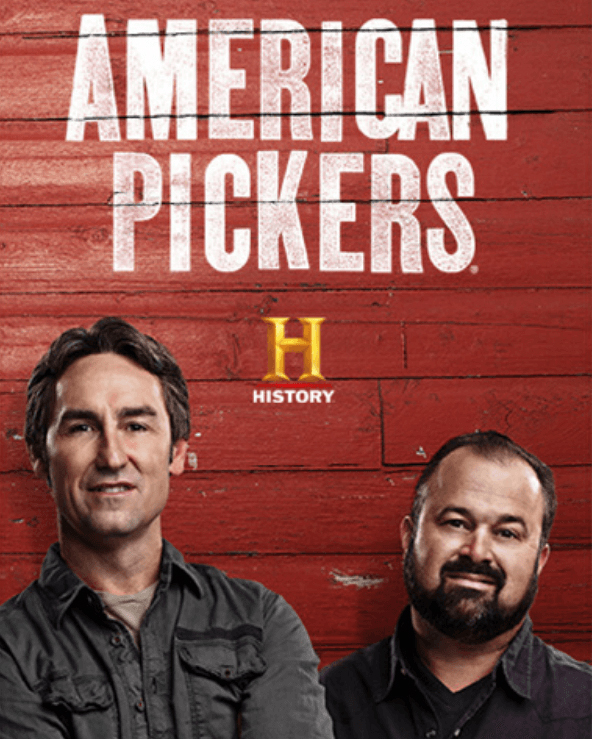– By #Pioneer Auto Show
For the majority of classic cars, an old abandoned prairie farmhouse or a scrap yard becomes their final resting place. Rusted, parted-out, or simply left behind from an earlier generation, these classics will never see the open road again. Far too often we come across one of these once beautiful machines and think, wow, what a waste. Back in ’57, every kid in my neighborhood would’ve mowed lawns from sun-up to sundown to get their hands around that steering wheel. But so it goes, I suppose. “They don’t make ‘em like that anymore” is a very true statement, and probably for good reason. As James May once said, if they were any good, they’d still be made. The fact of the matter is, modern cars are faster, more reliable, more comfortable, and more economical. You name it; modern cars of today are just better machines.
And yet, the classic car is not only still around, but is looked at as a thing of beauty, and the industry is thriving. Why is that? Why the love affair with classic cars? Why do we romanticize the idea of hitting the highways in an old gas hound from the thirties, or tearing around the town at a full speed of 63 mph in a once loved sports model? The answer is not a simple one, but there are several factors that come into play, and each classic car enthusiast surely has their own reason for letting their hearts wander towards the classics.
Imaginative Design
Let’s start with the design of the car itself. Before it even began to become a prototype, it was just a thought in some designer’s mind, who then used a pencil and paper to sketch out elegant shapes and beautifully crafted lines, the vision growing with each stroke. It was an age where designers were free to simply be creative, and reflect the moods and trends of the time into their passion. Long before roadblocks such as fuel efficiency, and crash tests were even a concern. Today, computers and robots with no souls or passion are in charge, steadily grinding out 24 hour days to the benefit of the major car manufacturers shareholders. Quotas must be met, and that means mass production, at a furious rate.
In that era long past, car production was more hands-on. Blood, sweat, and swears, along with simple tools and experience, went into creating panels by hand and watchful eyes. These creations have withstood decades of use, abuse, and the elements of time itself. Naturally, not all made it out the storm, and that’s what separates the classics from the cars that are simply old.
Mechanics that Give the Driver Control
Then we have the mechanics of the car, the engine and mechanisms that bring it to life. Modern car engines are basically sealed units, consisting of parts that are mostly only handled and serviced by professionals. Simply speaking, most components are controlled by a central electronic brain, which takes inputs from the driver, and then filters them through systems such as the drive-by-wire throttle system, the traction control, electric steering, electronic clutch, the torque vectoring system, the ABS system, and so on.
This is all great, considering we live in a time where safety is a top priority for most of us on the road. But it does somehow strip the car of its character, and takes away from us the feeling of being in control. The classics of yesteryear created a bond with the driver, one where the driver became an integral part of the driving experience. Driving a classic car requires a great deal of manual input from the driver, from adjusting the fuel/air mixture manually with the choke, to selecting gears and controlling the engagement of power to the wheels with the clutch.
Sure, it takes some extra effort. You don’t have your automatic transmission, push start convenience, electronic driver assistance, but for our money, it’s a far superior and rewarding experience. Classics just have more heart, more soul, than their modern contemporaries.
A Blast from the Past
Nostalgia.
Sometimes that one simple word can be all that is needed to describe our love affair with the classics. For all of our fondness of an advancing world, and all the new-age bells and whistles that make our lives more convenient, connected, and accessible, we still crave that feeling of nostalgia. These classics were often associated with the good life. They allowed us to be free, and gave us mobility, during a time that those luxuries weren’t readily available to everyone. They gave those who were able to have them a better quality of life.
All classic cars have a story to tell. Where they’ve been, how many hands have graced its steering wheel, how they’ve managed to stay in perfect operating condition, these are all part of their story. The cracks in the leather or the scratches on the paint are seen by some as imperfections, but to aficionados of classic cars, these are a record of the car’s history, adding to its character and chronicling its life. Nostalgia and stories, we can’t get enough of them.
Individualism, and the desire to carve out your own little space, also comes heavily into play in our love of the classics.
Membership to the Classic Car Culture
Anybody can have a car these days, most do, with just a little money, credit or financing. Even if you can’t afford it, there’s a lender or pre-owned lot that will put you behind the wheel of a used Pontiac Grand Am. Classics however, are a different story. They’re no longer in production, come in limited supplies, and take some dedication. But what they offer is far greater than that of a new set of wheels off the major car lots: exclusivity. You can’t just go buy yourself a Ferrari Daytona down at Al’s Imports and Domestics. No sir, you have to track down an owner somewhere, and then convince him he should sell his to you. Or you may have to come across an old 1950’s Chrysler in a corn field in South Dakota, and put in hundreds of hours and thousands of dollars, to get it road ready.
But you see, that’s part of the whole experience. The effort of finding, acquiring, owning and maintaining something that none of your friends have, shows your passion for something different. It’s your way of standing outside the pack, those in their more traditional and modern vehicles. It also allows you to join into a new pack, for there is an entire culture surrounding classic cars, and those invited into their inner circles get great satisfaction from showing off and sharing the stories behind their classics. Classic rallies, car shows, road trips, you name it; the culture provides it. It’s a culture in which personality and taste, shine through in the waxed reflections of those around you.
When it comes to classic cars, it’s rarely about the speed, or efficiency of the vehicle. It’s about the experience, style, exclusivity and passion. It’s about the story behind them, and the craftsmanship that went into creating it. It’s about art, and history.
Classic cars are timeless, and that’s why our love for them will only continue to grow. If you love classic cars as much as we do, make sure to make a trip to the Pioneer Auto Show, where you will have the opportunity to behold an array of over 275 unique models!
Last Modified:




